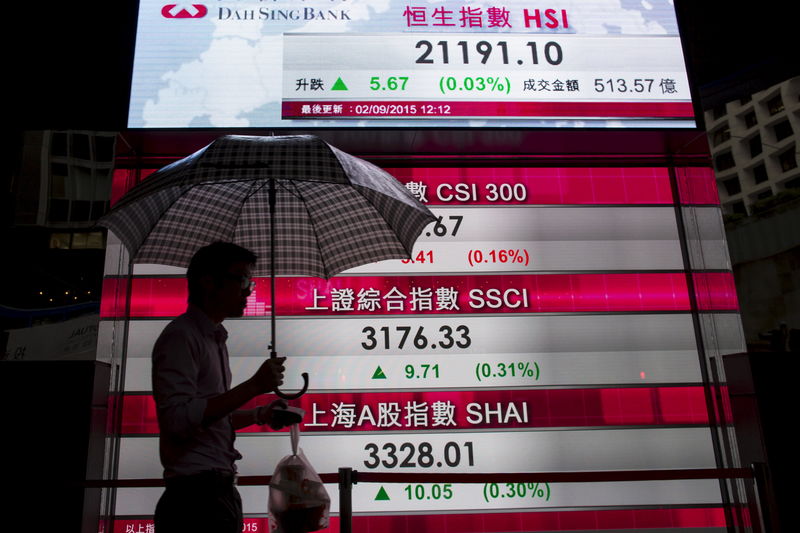By Alex Ho
Investing.com - It was a dismal end to the week for Asian markets, which took more hard hits after US markets tumbled in their worst session since the 1987 “Black Monday” crash.
With details still scarce on a stimulus package proposed by U.S. President Donald Trump and despite the announcement of a US$1.5 trillion injection from the U.S. Federal Reserve, U.S. markets fell almost into the double digits. The Dow Jones Industrial Average closed down 9.99%, the S&P 500 fell 9.51% and the NASDAQ Composite lost 9.43%.
In Asia, Japan’s Nikkei 225 tumbled 9.84% shortly into the morning session and South Korea’s KOSPI was down 8.14% by 9:44 PM ET (1:44 AM GMT). The plunge triggered circuit breakers in both markets soon after they opened. Australia’s ASX 200 tumbled 7.61%.
Hong Kong’s Hang Seng Index lost 7.39%. China’s Shanghai Composite was down 3.37% and the Shenzhen Component was down by 2.31%.
The Fed announced the $1.5 trillion injection into the financial system on Thursday. This will incorporate purchases including bills, notes, Treasury Inflation-Protected Securities and other instruments. It will also begin purchasing coupon-bearing securities until April 13.
The move did not impress Whalen Global Advisors founder Christopher Whalen, who told CNBC the “virus [COVID-19] was the catalyst but it’s not the cause.”
“Both bonds and equities were inflated rather dramatically by our friends at the Fed. You’re seeing the end game for monetary policy here, which is at a certain point you have to stop. Otherwise you get grotesque asset bubbles like we saw, and the engine just runs out of fuel.”
“Markets remain in a free-fall as uncertainty persists without a reliable anchor which can create near-term stability,” Ben Emons, managing director of global macro strategy at Medley Global Advisors, told Bloomberg.
The COVID-19 novel coronavirus pandemic continues to spread. The WHO reported 125,288 cases and 4,614 deaths as of March 12.
